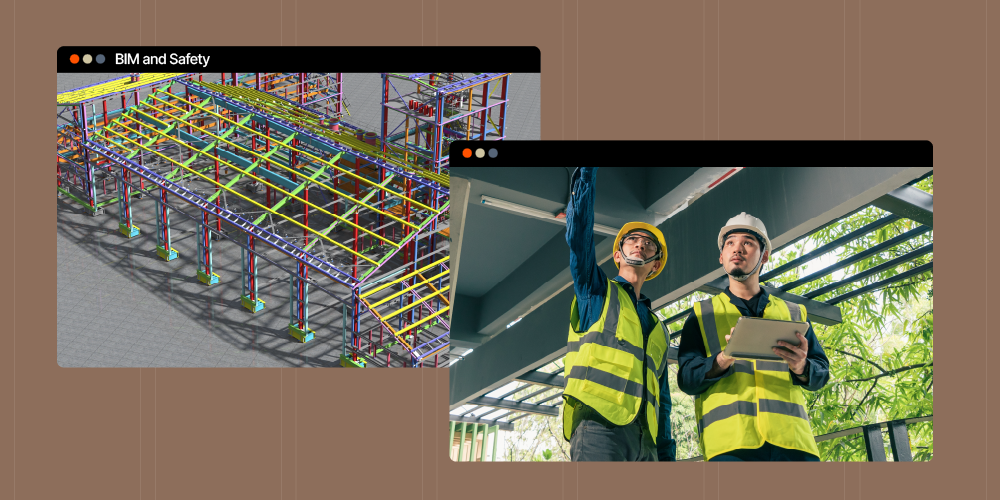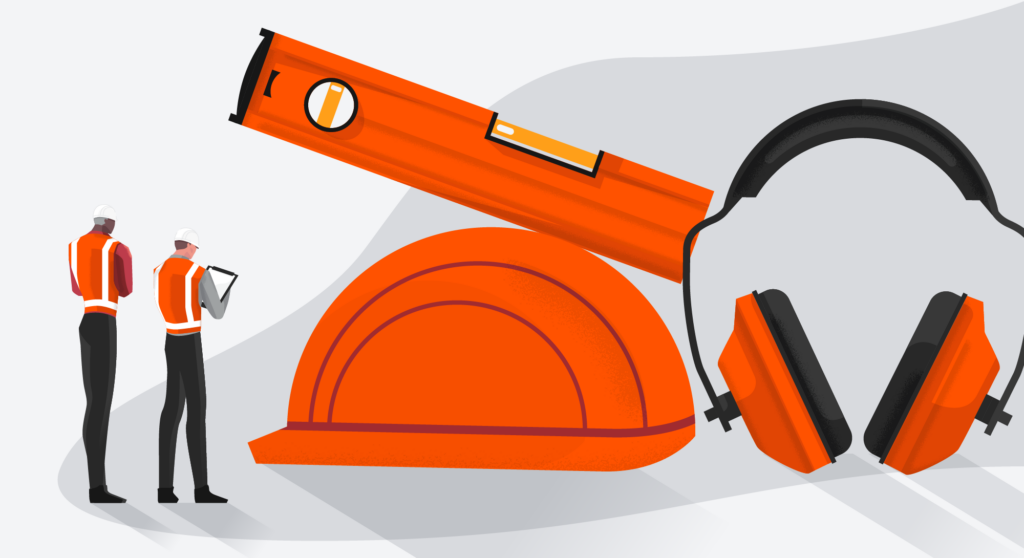— 9 min read
How to Leverage Construction Field Reports for Project Success
Last Updated Feb 23, 2024
Last Updated Feb 23, 2024

In the fast-paced and complex construction world, effective documentation is not just a bare minimum requirement — it's a necessity for success. Among the various types of reports generated during a construction project, field reports stand out for their specificity and actionable insights. These reports serve as a detailed record of unique events, activities, or milestones on the job site, offering a focused snapshot that can significantly impact the project's outcome.
Field reports are not just useful for ongoing projects; they also play an instrumental role in the as-built package or project closeout manual. This package includes as-built drawings, documentation, and copies of field reports, serving as a comprehensive record of the project from start to finish.
This article delves into the critical role of field reports in construction project management. From risk mitigation to stakeholder communication, the article provides a comprehensive guide on how field reports can be a cornerstone in achieving continuous improvement in construction projects.
Table of contents
Field Reports vs. Other Construction Reports
While daily reports in construction provide a consistent, routine update on general project status, field reports are more specialized. Daily reports often cover a broad range of activities and are usually required regardless of whether any significant events have occurred. They may include information on the number of workers on site, weather conditions, and a summary of the day's work.
Field reports, on the other hand, are event-driven and are typically generated to document specific occurrences or milestones. They are more detailed and may require input from various stakeholders, such as project managers, trade partners, and inspectors. Unlike daily reports, field reports may not be a daily requirement but are crucial for capturing data related to specific events that could significantly impact the project.
Events & Activities Covered
Field reports are versatile and can cover a wide array of specific events and activities, including but not limited to:
- Material Deliveries: Documenting the quality and quantity of materials delivered.
- Safety Incidents: Recording any safety violations or accidents that occur on-site.
- Equipment Testing: Detailed accounts of any tests run on machinery or equipment.
- Project Phase Completion: Marking the end of a significant phase in the project, such as the completion of the foundation.
- Inspections: Reports on walkthroughs and inspections by project managers or external inspectors.
- Atypical Events: These are any out-of-the-ordinary occurrences that could affect the project's timeline or budget, such as unexpected weather conditions or labor strikes.
By focusing on these specific events, field reports offer a more granular view of a project's progress and challenges — making them invaluable tools for effective project management.
The Importance of Field Reports
Field reports are not just administrative formalities; they are instrumental in effective project management. They offer a structured way to collect, organize, and analyze data, which is vital for decision-making. For instance, a field report could highlight that a significant percentage of delivered materials were damaged, prompting immediate corrective action.
These reports can also aid in risk mitigation, quality control, and stakeholder communication. They can be integrated into daily workflows and regularly audited to ensure the project stays on track. In a digital environment, field report data can even feed into project dashboards, allowing for real-time monitoring and trend analysis. This level of detail and organization significantly contributes to project efficiency, helping teams to complete projects on time and within budget.
Data Collection for Field Reports
Field reports require a variety of data to be most effective. The data collected not only serves to provide a snapshot of a specific event but also aids in the broader scope of project management. Here are some of the key types of data that should be included in a field report:
Project Details
The first section of a field report should identify the project. This includes the project's name, a unique Project ID for internal tracking, and a specific name for the report itself. This helps in organizing reports and makes it easier to retrieve specific documents later.
Project Type or Job Type
Understanding the context of a project is crucial for interpreting the data in a field report. Including a field for the "Project Type" or "Job Type" can provide this context. Whether it's a residential construction, a commercial build, or a specialized engineering project, this field helps categorize the report and tailor subsequent actions accordingly.
Location
The geographical location of the project is crucial for context. This could be as broad as the city or as specific as the GPS coordinates. Additionally, sub-locations like "north wing of the building" or "Site A" can provide further clarity, especially for larger projects with multiple sites or phases.
Prepared By and Time Stamp
Accountability is key in project management, and knowing who prepared a report can be as important as the data it contains. Including a "Prepared By" field and a timestamp adds a layer of accountability and authenticity to the report. It also helps in future audits or reviews, where understanding the context and timing could be crucial.
Distribution List
A distribution list is an essential component that specifies who needs to see the report. This list may include parties who were in attendance on the job that day, outlining their roles and the work they performed. This ensures that all relevant stakeholders are kept in the loop and can act upon the information if needed.
General Information and Specific Details
The body of the report should contain both general and specific information:
- General Information: This could include the type of activity being reported (e.g., material delivery, safety incident), the parties involved, and any immediate actions taken.
- Specific Details: These could range from the stage of the project (e.g., planning, construction, closeout) to more granular data like the percentage of the complete project. For instance, if the report is about a safety incident, included details would be the nature of the incident, the people involved, and immediate actions taken.
By meticulously collecting these types of data, field reports become a robust tool for project management, allowing for better planning, monitoring, and post-project review.
How to Implement Field Reporting for Project Efficiency
Integrate reports into the daily workflow.
Field reports should not be standalone documents that are filed away and forgotten. Instead, they should be integrated into the daily workflow of the project management team. This ensures that the data collected is immediately actionable and can be used for real-time decision-making.
Audit and review reports regularly.
Regular audits and reviews of field reports are essential for maintaining the quality of the data collected and ensuring that the reports are serving their intended purpose. This process can help identify any inconsistencies or gaps in reporting, which can then be addressed promptly.
Standardize reports for consistency.
Standardizing the format and types of data collected in field reports is beneficial to help make the auditing and reviewing process more efficient. A standardized template ensures that all necessary information is captured consistently, making comparing reports and tracking progress over time easier.
Track key project details.
For tracking key project details, a section can be dedicated to open items or pending tasks, providing a quick snapshot of what needs immediate attention. For example, in a road construction project, a section in the field report could be dedicated to tracking the status of permits or environmental assessments. This "open items" section highlights pending tasks that could delay the project if not addressed.
Risk Mitigation & Stakeholder Communication
Field reports play a critical role in risk mitigation. By providing detailed accounts of specific events, these reports allow project managers to identify potential risks early. For example, a field report highlighting repeated safety violations could trigger a review of safety protocols, mitigating the risk of future incidents.
Effective stakeholder communication is crucial for the success of any project, and field reports can serve as an excellent communication tool. These reports can be shared with project stakeholders, such as project managers, trade partners, and inspectors, to keep everyone in the loop. In cases where immediate action is required, a field report can serve as the official document that triggers that action.
It's crucial that once the field report is generated, it should only be "viewable" and not editable, as it represents a record copy of the jobsite visit, observation, inspection, deficiency, etc. No other parties should be able to modify it.
Technology for Data Collection & Analysis
Technology has revolutionized the way field reports are generated and utilized. Digital tools and software can automate the data collection process, making it quicker and more accurate. For instance, mobile apps can allow field workers to input data directly into a centralized system, eliminating the need for manual data entry and the errors that come with it.
The digital format offers several advantages, such as easily exporting to a PDF, viewing on a mobile app, and sharing in real-time. This enables teams to be proactive and clearly understand what is occurring on the jobsite and at what point in the project lifecycle.
For example, real-time sharing of digital field reports could enable the team to immediately address an unexpected geological issue on a complex infrastructure project, preventing costly delays.
Moreover, construction management software has the ability to analyze this data in real-time, which can help provide valuable insights for decision-making. Dashboards can display key performance indicators, trends, and other crucial analytics for project management.
Artificial Intelligence (AI) also holds significant promise for the future of construction field reporting. Machine learning algorithms can analyze historical data to predict future trends, such as potential safety risks or delays, allowing for proactive rather than reactive management. AI can also automate the analysis of large data sets, identifying patterns and insights that a human might overlook.
6 Ways To Make Data Actionable
Field reports are most valuable when the data collected is implemented onsite. Here are six ways project managers can use the data collected in these reports to improve operations:
- Monitoring: Real-time data from field reports can be used for ongoing monitoring of various project metrics, such as safety compliance, work progress, and resource utilization.
- Progress Tracking: Field reports can provide a detailed account of what is complete and offer a clear picture of the project's progress and what remains.
- Resource Allocation: Data on work progress and resource utilization can help project managers allocate resources more efficiently, ensuring that workforce and materials are available where they are most needed.
- Quality Control: Field reports can highlight issues related to the quality of work or materials, allowing for immediate corrective actions.
- Problem-solving: The detailed data in field reports can help identify the root causes of problems, enabling more effective problem-solving.
- Identifying Recurring Issues & Future Opportunities: By regularly reviewing field reports, project managers can identify recurring issues and spot opportunities for process improvement or cost-saving.
Field reports are more than just administrative documents -- they are actionable tools that drive project success. Their detailed nature helps understand specific events, activities and milestones — providing the data for informed decision-making. They become invaluable assets for monitoring, quality control, and risk mitigation when integrated into daily workflows and reviewed regularly.
Was this article helpful?
Thank you for your submission.
33%
67%
You voted that this article was . Was this a mistake? If so, change your vote here.
Scroll less, learn more about construction.
Subscribe to The Blueprint, Procore’s construction newsletter, to get content from industry experts delivered straight to your inbox.
By clicking this button, you agree to our Privacy Notice and Terms of Service.
Categories:
Tags:
Written by
Bianca Holtier Coury
15 articles
Bianca Holtier Coury spent 15+ years in various roles managing construction projects, such as Preconstruction Team Lead, Purchasing Agent, and Project Manager. She has a wealth of experience in all project phases, including managing project schedules and budgets, bid management, and coordinating vendors and subcontractors. Bianca is an Associate Member of AIA and a LEED Green Associate. She currently serves as Director of Partnerships for the Construction Progress Coalition. Bianca holds a BA in Urban Design and Architecture Studies from NYU. She lives in Cleveland, OH.
View profileBob Hanes
14 articles
Bob Hanes is a professional writer and entrepreneur. He previously worked as a military sales and applications engineer for an aerospace firm, and cofounded a biotech company that creates drug screening solutions for the pharmaceutical industry. Bob has an MBA from the University of Buffalo in Logistics, Materials, and Supply Chain Management, and a BE in Mechanical Engineering. He is an avid Buffalo Bills fan.
View profileExplore more helpful resources

The Strategic Partnership Between Construction Safety and HR
A construction safety manager’s role is significant: It entails broad oversight over the construction workplace to prevent incidents that could cause worker injury or property damage. In addition to this...

Enhancing Construction Safety with BIM Technologies
The construction industry is no stranger to tools: Even ancient civilizations developed mallets and axes to make their work easier. Today’s latest tools look different, but they can be as instrumental...

Construction Safety Training – Goals, Benefits & Emerging Trends
Construction safety training (CST) educates workers about the risks they face on construction sites and teaches them how to prevent accidents, injuries and fatalities. The construction industry has the highest...

Technology for Construction Safety: Strategies to Supercharge and Scale Safety Practices
The construction industry is no stranger to the arrival of new technology, and builders are realizing its many benefits. Modernization across the industry is helping contractors streamline operations, enhance efficiency,...